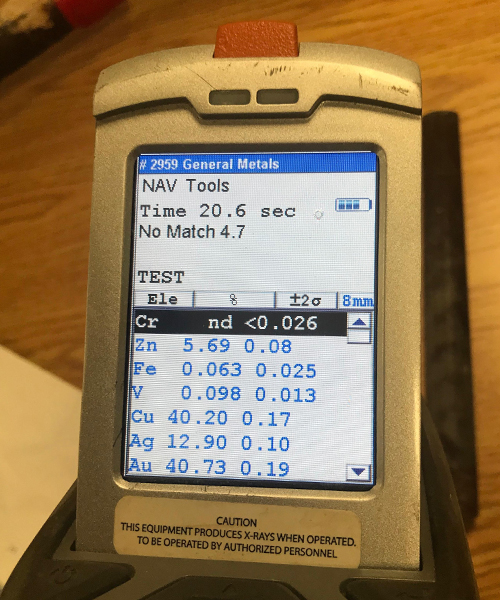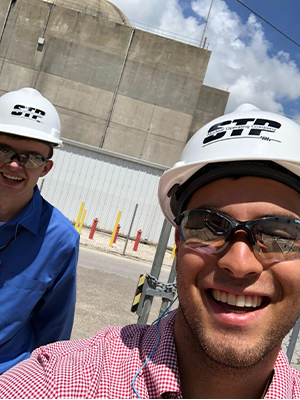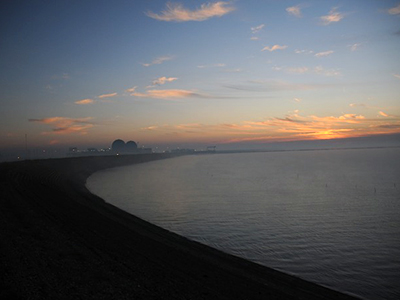
Jack Wiley ‘18 is a nuclear engineering student originally from Washington state. While taking a break from running the Texas A&M University table at the American Nuclear Society national conference in Washington D.C. last year, Wiley started a conversation with Varex Imaging’s radiation modeling software division. He was offered an internship that would open his eyes to a greater magnitude of career options than he had ever considered before.

Working at Varex Imaging as an applications engineering intern, he learned that with his Texas A&M nuclear engineering degree, he could pursue work in the nuclear, radiation or software fields, among others. The group Wiley worked with focused on the continued development of the Atilla software, used for modeling radiation transport. Wiley’s hours were spent on sensitivity testing, tweaking the program slightly every day. His input had a direct influence on the final product, and he looks forward to seeing the industry embrace the new developments in the expanding technology. Varex software augments Monte Carlo N-Particle methodology to create more accurate shielding estimates, an advancement that could ultimately save thousands of worker hours.
Wiley enjoyed living in Washington state and working with a small, focused team. “My nuclear engineering classes gave me a deeper understanding of what I was doing and how to critically analyze the results,” said Wiley. “Dr. (John) Poston’s communication class also prepared me for how to project myself in a professional setting.” Wiley noted that although the logistics may be difficult, he would highly recommend the internship to other Aggie nuclear engineering students. “Being able to interact with people in a company and see how a product is developed and refined has greatly impacted my professional growth,” said Wiley.

South Texas Project
Russell Mendoza ‘18, a nuclear engineering student from Belton, Texas, spent his summer as a reactor and fuels intern at the South Texas Project (STP) in Bay City, Texas. Mendoza collaborated with Ian Craig ‘19, a nuclear engineering student from Rockwall, Texas, to verify the integrity of spent fuel assemblies for dry cask storage.
A typical nuclear fuel cycle is about 18 months. After 18 months in the reactor, fuel assemblies are transferred to a spent fuel pool. This was STP’s method from 1989 until 2018. Now the pool at the plant is full and many of the assemblies need to be transferred to dry cask storage.
Craig and Mendoza characterized spent fuel by reviewing all the recorded information on the fuel assemblies by the plant, which included comparing computer and paper data. Each fuel assembly was characterized on physical damage and radiochemistry. They reviewed refueling inspection documents and condition reports to justify the physical integrity of a fuel assembly. They also reviewed end of cycle radiochemistry data. Their education helped them to discern what an engineer meant from 1989 to 2014 in the documentation.
“Ian and Russell were great to work with,” said David Bean, a nuclear engineer at STP and their internship coordinator. “They took on what would appear to be a job that would take more months than their internship allotted for. They dug in, got up to speed, and through diligent work were able to compile a large amount of data from many sources into one, easy to follow product.”

STP made the internship dynamic by giving Mendoza and Craig the opportunity to explore the plant with them frequently, including multiple visits to the control room. “I was able to read the flux mapping dials,” said Mendoza. “Our work will be implemented and viewed by the Nuclear Regulatory Commission (NRC) — it was real work and a critical project.” Most significantly, Mendoza and Craig saved both the NRC and STP time by discovering potential fuel leakers.
“How a power plant is run seems like a simple diagram in class, but there’s so much more involved,” said Craig. “Being able to walk around the plant with my mentors every day gave me a real working knowledge of the power plant. If you have any interest in nuclear power or reactors, I would recommend at least touring a plant.”
“I’ll never forget going into containment at mode 1 (when the reactor is in full operation),” said Mendoza. “We dressed down in full protective clothing. It was sweltering in containment, pushing 115. But when you go down below the reactor, it was freezing.”

Another adventure was touring the reservoir and seeing six-foot-long fish. The STP reservoir is 7,000 acres and is one of the largest above ground man-made lakes in the world. The plant's 12,220-acre site provides a protected habitat for several threatened species, including bald eagles, peregrine falcons and white-tailed hawks.
Mendoza shared that knowledge of the terms and how a nuclear reactor worked greatly helped his internship. “Studying abroad in Switzerland, Austria and France with the Department of Nuclear Engineering and touring dry cask storage and spent nuclear fuel in the Alps was a great asset for my internship,” said Mendoza. “If I could go back and study nuclear engineering again, I would focus more on the consequences of different things like Xenon gas.”
Nuclear engineering internship options at STP include reactor analysis, thermal hydraulics and risk management. But interning in the nuclear industry is just one way to set a student apart in their future job search. “Hands down, I would recommend going to the SEC (Student Engineering Council) career fair,” said Mendoza. “Presenting the face behind the application, making an impression and meeting the company’s representative play an important factor in your job search.”

Bean recommends Aggies seeking an internship or career at STP start as soon as possible. “If you are able to land an internship, the experience will be valuable and probably lead to other opportunities as well,” he said.
“I chose Texas A&M because of its quality engineering program and nuclear facilities,” said Craig. After graduation, Craig will pursue his master’s degree at Texas A&M, while Mendoza has accepted a government job offer.
Wiley is currently pursuing opportunities in the software and radiation detection sectors. “Marna (Stepan), the undergraduate advisor, helped convince me to try nuclear,” said Wiley. “Nuclear is impressive on the surface, and the deeper I get the more futuristic it still is. I like being at the center of innovation. I found my family here.”
Monte Carlo N-Particle® are registered trademarks owned by Los Alamos National Security, LLC, manager and operator of Los Alamos National Laboratory.